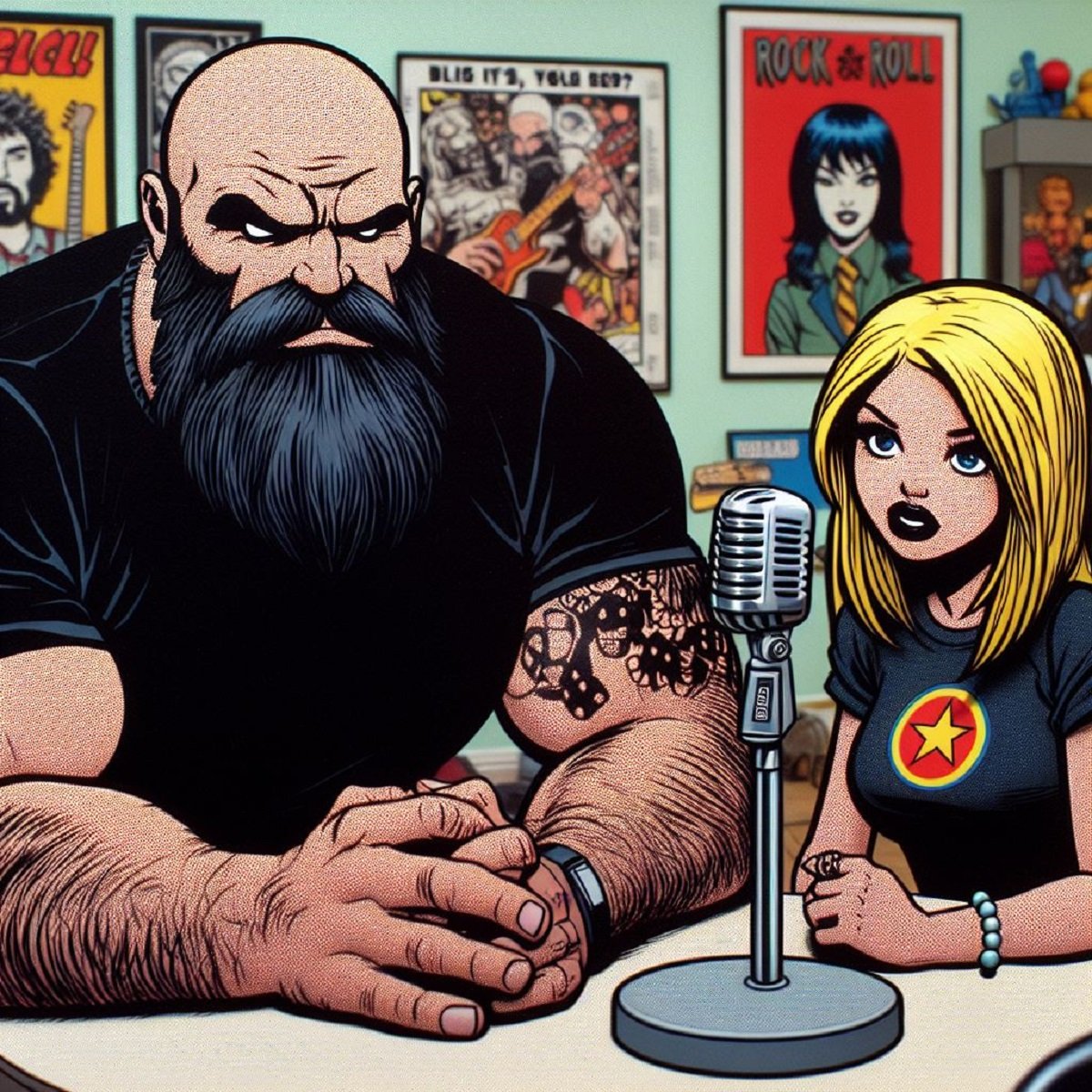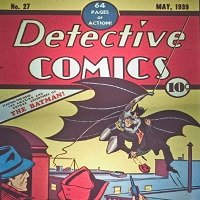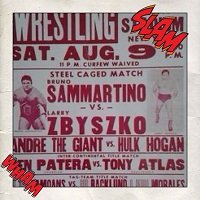“Specially Marked and For a Limited Time”: A Short History of Cereal Box Prizes
By: John Wright
There was a common occurrence in my youth. Often, I would be dragged to the grocery store with my mom. Because we lived in a small town and in a more innocent time, she could trust me to hang out either in the little toy section or the magazine section while she shopped. So, there I would be, either at the comic book spinner or leafing through the latest professional wrestling or rock music magazine (provided it had pictures of KISS in it).
Out of the corner of my young eye, I would see my mom crossing from the canned goods and baking supplies (who cared about that stuff?!) to one of the most important aisles in the store. I would put my magazine or comic book down and gingerly walk over and stand beside her as if I could think of no greater joy than observing her negotiating the purchase of our family’s sustenance. Then, she would look at me and say, “Go pick out some cereal.” Yes! My plan worked!!
Then I would start deliberating and thoughtfully perusing the cereal aisle intent on making one of the most important decisions in my young life to date. As much as I loved that yummy, sugary, processed grain goodness slathered in whole milk, my main decision criteria were not flavors nor textures. No, it was the toy nestled deep in the box. Most of the time the toy in the box was more important to me than the actual cereal brand.
My flavor choices could range from Sugar Corn Pops to Boo Berry provided a good toy was inside. Now, I did have my limits. I wouldn’t pick All Bran or Grape Nuts if they had a View-Master, two Hot Wheels cars, and a life-size poster of Linda Carter in her Wonder Woman costume inside it.
So, let’s take a few minutes and explore the history and nostalgia of cereal toys. That is if you can stop reading the back of the cereal box for a few minutes.
Skippy Trading Cards from Wheaties / Advertising for Pep Cereal Buttons
Opposition/ Legal Troubles
In 1974, the Federal Trade Commission considered banning ads aimed at children (7). This would have been a huge blow to cold breakfast cereals and their toy prizes as cereal ads were in heavy rotation every Saturday morning while cartoons aired. Additionally in the 1970s, consumer groups tried to ban cereal companies from using iron-on patches, a cereal prize perennial favorite. This was due to concerns about kids using a hot iron to apply the patches.
In the 1990s, slap bracelets, another common in-the-box prize, were banned due to reports of kids cutting their wrists on the sharp edges (8). One of the biggest recalls of cereal box toys occurred in 2000 when Kellogg’s recalled over 800,000 NASCAR-themed toy cars due to the risk of parts falling off and becoming a choking hazard. (9). Toy cars and slap bracelets were just a few examples of cereal box toy offerings as choices ran the gamut between types of toys and ways to obtain them.
Points of Sale and Types of Toys
The ways cereal box toys got into the hands of kids are almost as varied as the types of toys given as prizes. In the 1970s and 1980s, which was really the Golden Age of Cereal Box
Toys, there were three main ways to distribute cereal box toys. The first was requiring the customers to submit a certain number of proofs of purchase to receive a prize. It seems like this was usually reserved for more expensive prizes that warranted more than one purchase. I was more into instant gratification because this was my least favorite way to get a prize. Second in delivery methods was the prize on the back of the box. Sometimes, these may be combined with prizes in the box. For example, a game board on the back of the box with the game pieces inside.
One of the most endearing and unique prizes on the back of cereal boxes were records. They ranged from recorded popular stories, songs, or stories about the cereal’s character(s), spooky Halloween sounds, or popular music. Even the tunes of The Monkees and the Jackson 5 found their way onto the back of cereal boxes (10). In many cases, the record was actually pressed into the back of the box. Of course, this was a bit of a quandary as you had to wait until the cereal was gone before listening to your record.
The quandary about getting the toy (and the cereal) out of the box was a big consideration in the final way of distributing prizes and that was putting them right in the box. There were really three options to getting one of those toys out of the box. Usually, they were enclosed in a wax paper or plastic envelope and would settle somewhere between halfway and all the way to the bottom of the box. Not on the outside of the wax paper bag holding the cereal but right in the middle of the cereal. So, if your folks owned one of those cool Tupperware containers, you simply had to pour out the cereal to get to your prize. If you didn’t have another receptacle for the cereal, you could shove your dirty little kid hand right into the cereal and dig out your prize. This technique should have only been done outside of the view of parents and siblings. However, I proudly admit to using it frequently.
The other (and most excruciating) method was to wait until the prize eventually came out of the box when pouring out cereal (BORING!).
The good ol’ Tupperware cereal container
Post Honey Comb Box with Monkees record
Now that we have discussed the ways to get the toys free from their boxes, now let’s talk about the variety of available toys. In 1943, Kellogg’s started putting model airplanes in Pep. Another popular toy was baseball and other sports cards, especially the 3D cards that made it seem as if the player was moving when the card was moved back and forth.
As mentioned earlier, the introduction of plastic molding made inexpensive plastic toys easier. Some of the more popular prizes I remember were anything that could glow in the dark from pens to Universal Studios monster figurines. Then what kid didn’t get excited about finding one of those wall walkers that were made of a sticky plastic that you threw against the wall, and they would slowly lose adhesion and appear to walk down the wall. Oh, and who could forget the Cap’n Crunch submarine toy that was somehow powered by baking soda. I really could never get that one to work as advertised. The website, MrBreakfast.com, rated the Sugar Bear 3-in-1 yo-yo (yo-you, whistle, and puzzle) as the greatest cereal box prize of all time. It was followed in their poll by the Alpha-Bits terrariums (11)
Cereal manufacturers attempted to keep up with the times as technology evolved. Magic tricks and toy cars gave way to more high-tech prizes such as codes for ringtones, iTunes downloads, and computer games on floppy disks and CD-ROMs. In 1997, Chex cereals introduced the Chex Quest computer game.
Screenshot from Check Quest
The End
Safety concerns, primarily with small parts and choking, and increased regulations regarding advertising aimed at minors along with trends of kids becoming more interested in computer games and other more technologically advanced activities have basically led to the end of cereal box toy prizes. In 2020, General Mills in an attempt to create some retro excitement around cereal box toys put figures of some of their more popular cereal characters in boxes (to include Lucky the Leprechaun, Sonny the Cuckoo Bird, and Trix the Rabbit) (13). However, it seems we have reached a time when future generations will not be able to reach their dirty little hands into those specially marked boxes past the sugary artificially flavored processed goods
General Mills Cereal Squad
Sources
1. https://www.tastingtable.com/1252004/cereal-box-toys-why-did-they-stop/
3.https://cerealoffers.com/Kelloggs/Cornflakes/1930s/Funny_Jungleland_/funny_jungleland_.html
5. https://thephantom.fan/collectibles/pep-pin/
6. https://www.xometry.com/resources/injection-molding/plastic-injection-molding-history
8. https://www.mentalfloss.com/article/620529/slap-bracelet-phenomenon-1990
9. https://www.postbulletin.com/news/recalls-toy-cars-in-cereal-boxes
10. https://www.metv.com/lists/did-you-cut-out-and-save-these-records-from-the-backs-of-cereal-boxes
11. https://www.mrbreakfast.com/list.asp?id=6
12. https://en.wikipedia.org/wiki/Chex_Quest
13. https://www.generalmills.com/news/stories/meet-the-cereal-squad
If you found this article interesting consider becoming a Patreon supporter. That is how When It Was Cool keeps our website and podcasts online, plus you get lots of bonus content including extra and extended podcasts, articles, digital comics, ebooks, and much more. Check out our Patreon Page to see what's up!
If you don't want to use Patreon but still want to support When It Was Cool then how about a one time $5 PayPal donation? Thank you!






















































